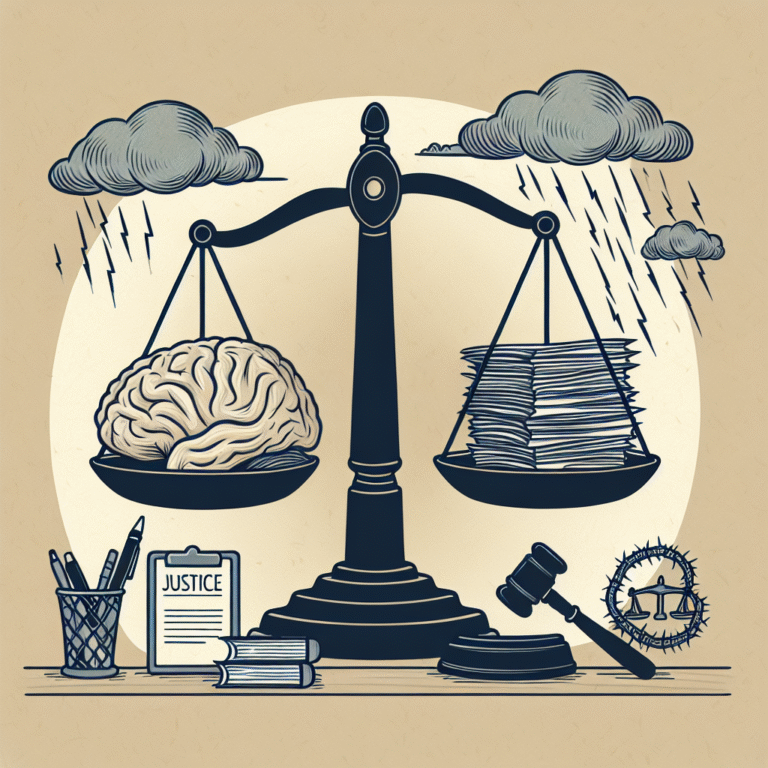From Fatigue to Focus: Proven Strategies to Overcome Burnout
Introduction
In today’s fast-paced world, the relentless demands of work, personal responsibilities, and social expectations can quickly turn our motivation into exhaustion. Burnout has emerged as a pervasive issue that affects productivity, well-being, and overall quality of life. But what if you could shift the narrative from fatigue to focus? In this article, "From Fatigue to Focus: Quick Strategies to Overcome Burnout," we will explore actionable insights that can help you reclaim your energy, redefine your goals, and reinvigorate your passion for life and work.
Burnout doesn’t just impact your job performance; it can seep into your personal life too, causing stress, anxiety, and even physical health issues. Fortunately, there are proven strategies you can employ to mitigate these feelings of burnout quickly and effectively. Let’s dive into the topic to transform your fatigue into focus!
Understanding Burnout
What Is Burnout?
Burnout is a state of emotional, physical, and mental exhaustion caused by prolonged stress or overwhelming responsibilities. It can manifest in various ways, including:
- Chronic fatigue
- Insomnia
- Anxiety
- Depression
- Decreased productivity
Recognizing these signs is the first step in moving from fatigue to focus.
Causes of Burnout
Burnout can stem from multiple sources, including:
- Workplace Stress: Long hours, unrealistic deadlines, and lack of support can all contribute.
- Personal Life Stressors: Family responsibilities, financial pressures, and even social commitments can weigh on you.
- Poor Work-Life Balance: When work invades every aspect of your life, the result can be overwhelming.
Understanding these root causes is critical in identifying the appropriate strategies to combat burnout.
Quick Strategies to Overcome Burnout
1. Prioritize Self-Care
Case Study: Sarah’s Transformation
Sarah was a marketing professional who often worked late nights, neglecting her physical health and personal relationships. After recognizing her burnout, she began prioritizing self-care. She scheduled daily walks, maintained a balanced diet, and took time off when needed. Within weeks, Sarah found her focus sharpened, and her work performance improved tremendously.
Analysis: Sarah’s experience underscores the importance of self-care in overcoming burnout. Implementing even small changes can lead to significant improvements in mental clarity.
Tips for Self-Care
- Exercise Regularly: Aim for at least 30 minutes a day.
- Maintain a Healthy Diet: Fuel your body with nutritious foods.
- Practice Mindfulness: Incorporate meditation or yoga into your routine.
2. Set Boundaries
Setting boundaries is essential for maintaining a healthy work-life balance. Whether it’s saying "no" to extra tasks or designating specific hours for work, boundaries help protect your time and energy.
Case Study: John’s Work-Life Balance
John was a software developer who felt overwhelmed by constant work demands. By setting clear boundaries—including a strict end-of-day work cutoff and no work-related emails after hours—John discovered that he could dedicate time to hobbies and family, drastically reducing his feelings of burnout.
Analysis: John’s case illustrates the effectiveness of setting boundaries in reclaiming focus and mitigating burnout.
3. Break Tasks into Small Steps
Instead of viewing projects as insurmountable challenges, break them down into smaller, manageable tasks. This approach not only makes daunting responsibilities feel more attainable but also boosts your sense of accomplishment.
Tips for Task Management
| Strategy | Description |
|---|---|
| To-Do Lists | Write down daily tasks for clarity |
| Pomodoro Technique | Work in short bursts, followed by breaks |
| Time Blocking | Allocate specific time slots for different tasks |
By managing your responsibilities this way, you can maintain focus and prevent the feeling of being overwhelmed.
4. Delegate and Collaborate
You don’t have to go it alone. Delegating tasks to team members or collaborating on projects can help distribute the workload, reducing individual stress levels.
Case Study: The Team Effort
A marketing team facing an overwhelming project found relief by distributing tasks among members. By collaborating and sharing responsibilities, they not only met their deadline but also maintained a higher level of creativity and energy throughout the project’s duration.
Analysis: This case emphasizes the importance of teamwork in mitigating burnout, highlighting that asking for help is a strength rather than a weakness.
5. Take Regular Breaks
Incorporating regular breaks during your day improves focus and productivity. Whether it’s a five-minute pause every hour or a longer break for lunch, stepping away from your work can recharge your brain.
Benefits of Taking Breaks
- Improved Focus: Short breaks can enhance concentration over time.
- Reduced Stress: Taking time away from responsibilities can help manage feelings of overwhelm.
6. Practice Gratitude
Cultivating a gratitude practice can shift your focus from stressors to positive aspects of your life. This can significantly enhance your mood and energy levels.
Tips for Gratitude Practice
- Daily Journaling: Write down three things you’re grateful for every day.
- Gratitude Reminders: Set reminders to reflect on positive aspects of your day.
7. Seek Professional Support
Sometimes, managing burnout can require professional help. Therapists and counselors can offer strategies and guidance tailored to your specific situation.
Case Study: Emily’s Journey
Emily struggled with severe burnout and decided to speak with a therapist. Through counseling, she learned coping mechanisms and effective stress management techniques. This support was crucial in her recovery and helped her find patience with her work demands.
Analysis: Seeking professional support can be a game changer for many feeling overwhelmed. Taking this step is about self-advocacy and prioritizing your mental health.
Summarizing Key Points
In this exploration of "From Fatigue to Focus: Quick Strategies to Overcome Burnout," we have uncovered several strategies that can help reclaim your energy. From prioritizing self-care and setting boundaries to practicing gratitude and seeking professional support, these steps can lead you toward a more focused, fulfilling life.
Motivational Takeaway
Remember, it’s okay to pause and reassess your needs. Focus on what’s within your control and take actionable steps toward renewed energy and enthusiasm.
FAQs
1. What are the signs of burnout?
Common signs of burnout include chronic fatigue, irritability, decreased performance, and feelings of helplessness.
2. How can self-care help with burnout?
Self-care activities boost your physical and mental well-being, restoring balance and reducing feelings of fatigue.
3. Is it shameful to seek professional help for burnout?
Absolutely not. Seeking help is an empowering step towards recovery and self-improvement.
4. Can burnout affect my personal relationships?
Yes, burnout can lead to irritability and withdrawal, negatively impacting personal relationships.
5. How quickly can I recover from burnout?
Recovery varies by individual, but implementing strategies for managing burnout can lead to noticeable improvements within weeks.
By employing the insights and strategies from this article, you can move from fatigue to focus effectively. Remember that overcoming burnout is a journey, and every small step forward matters. Your mental and physical well-being deserve the utmost attention and care—so take that first step today!















